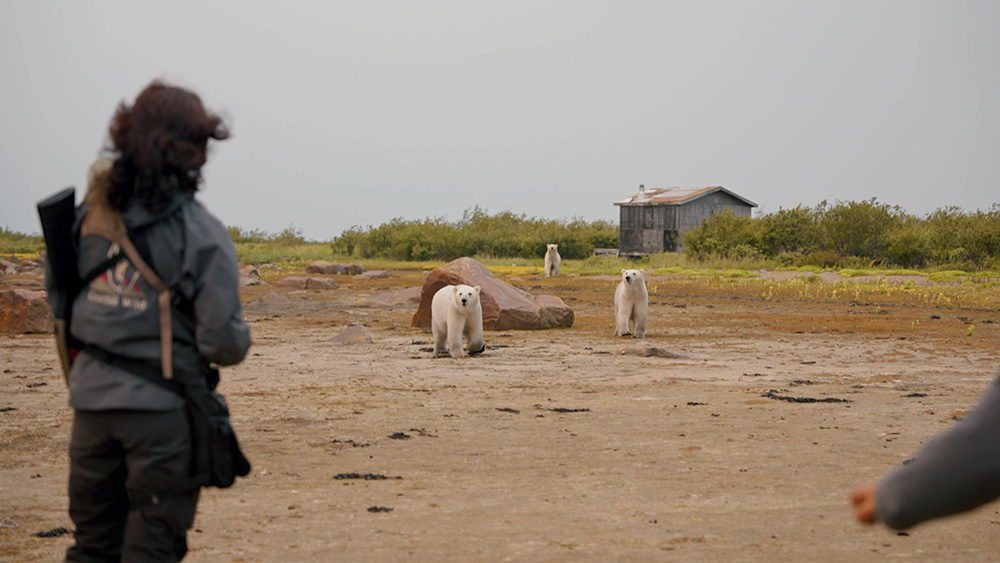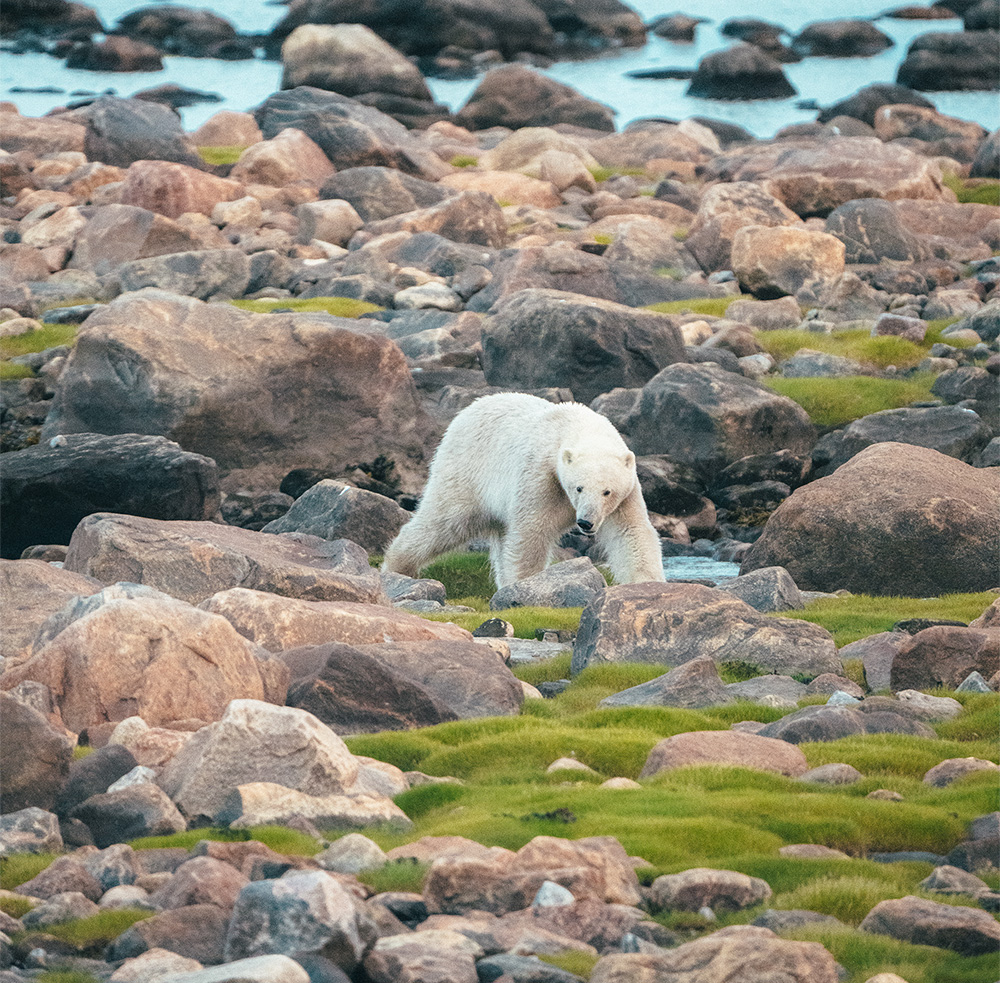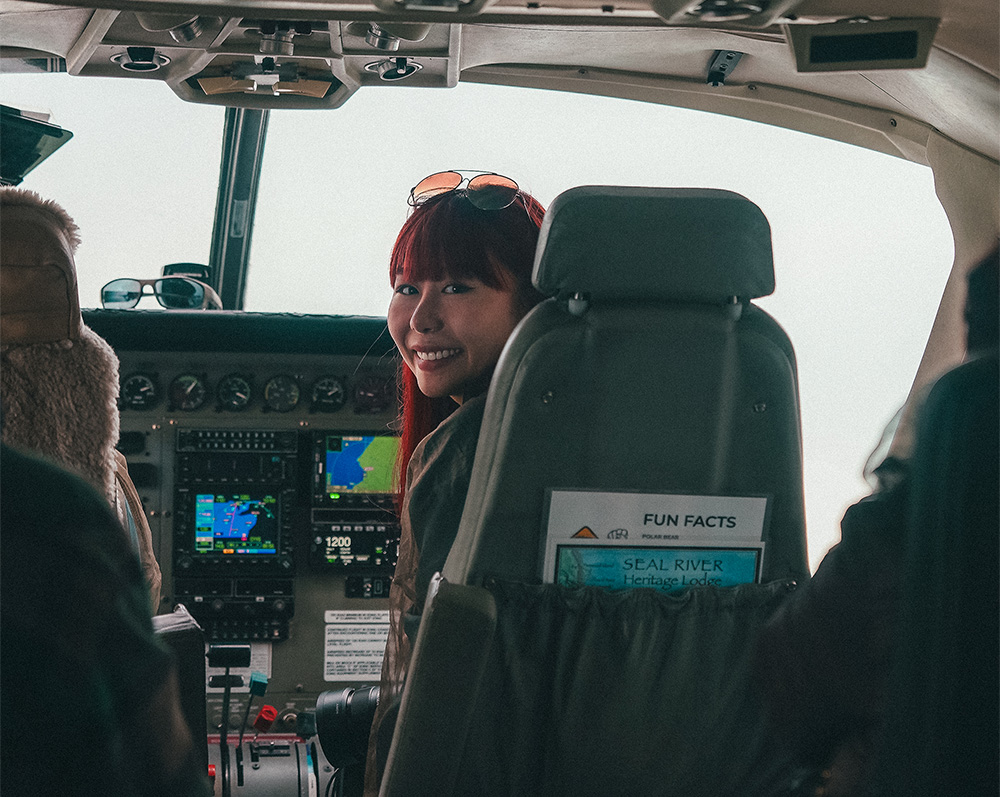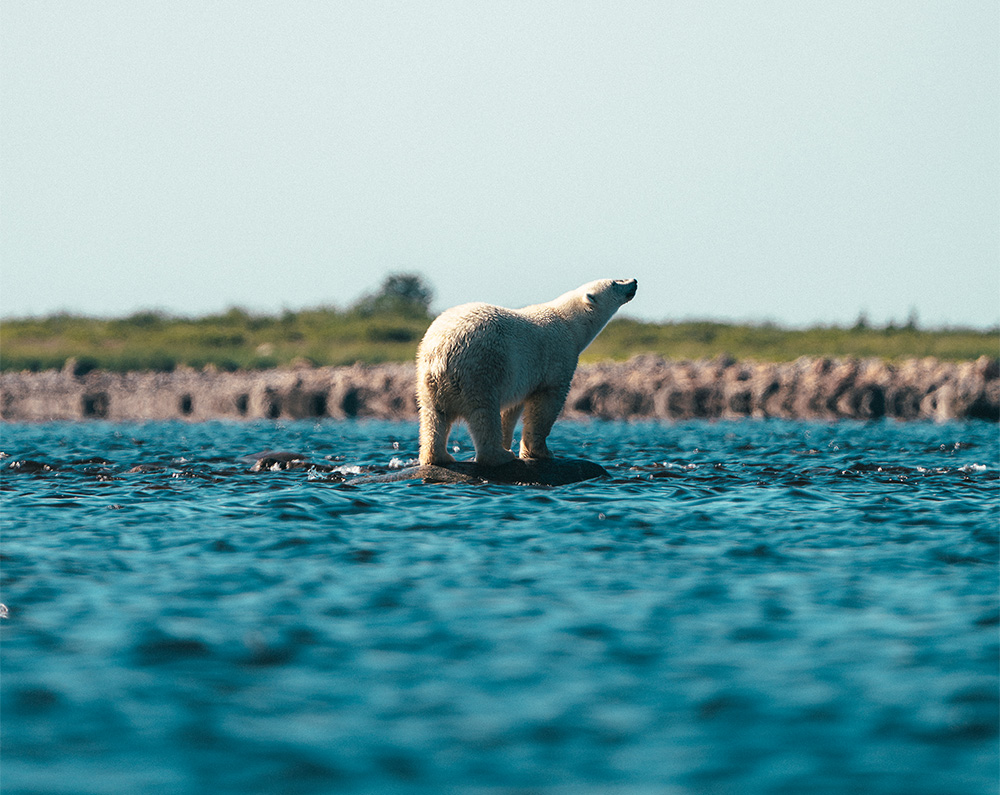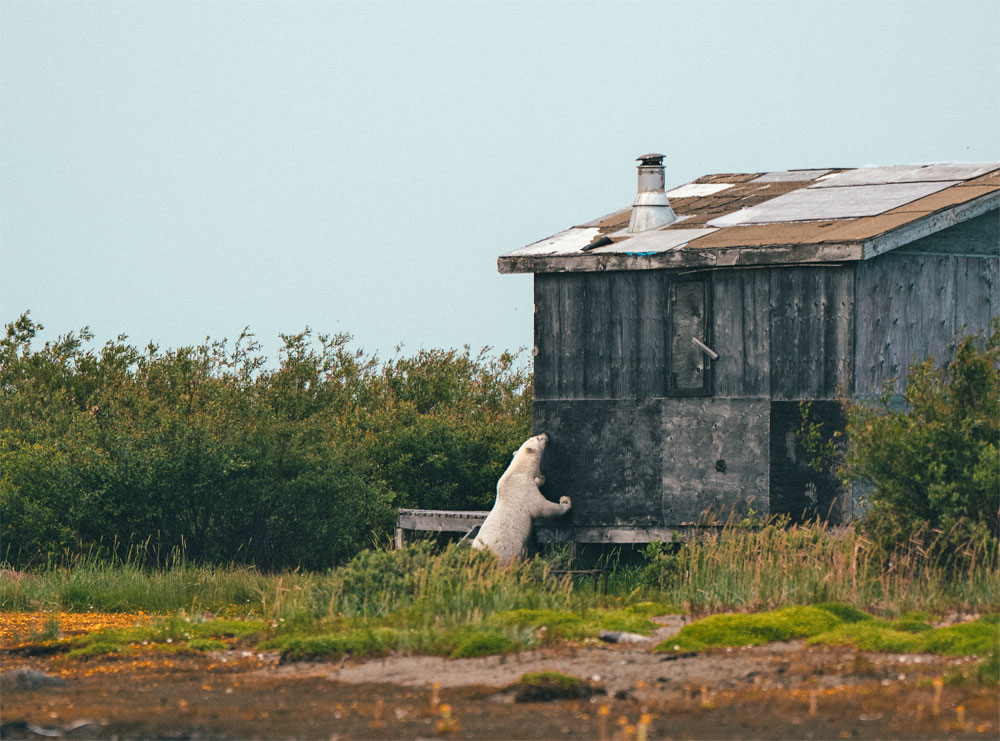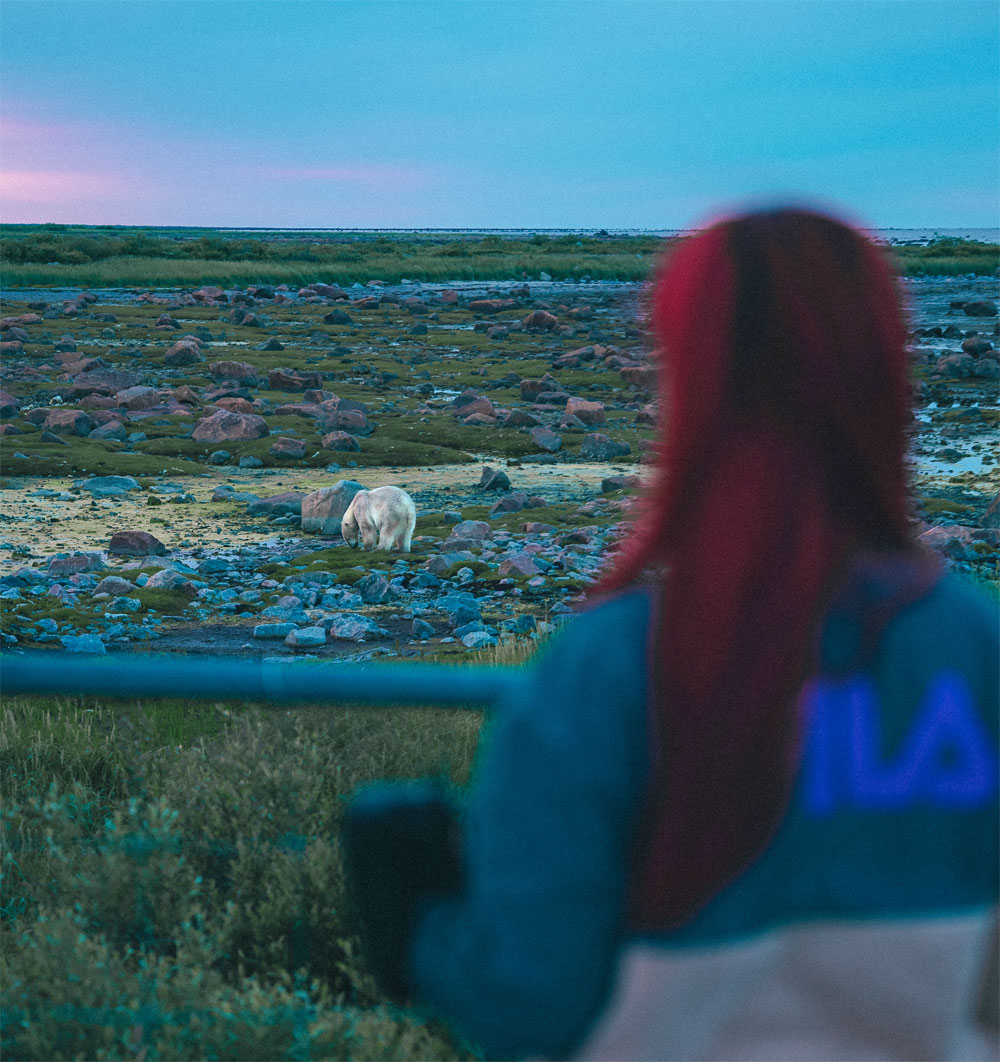Polly Chan, a dynamic wildlife filmmaker and YouTuber from Hong Kong, was recently at Seal River Heritage Lodge working on a new film entitled “Last Chance Tourism,” which aims to provoke thought and discussion about the impact of tourism on endangered species and their habitats.
By showcasing her journey to Churchill Wild and the interactions with polar bears, Polly hopes to raise awareness about climate change and the importance of conservation efforts. Her interviews with guests, guides, and conservationists from organizations including Polar Bears International add depth to her narrative, highlighting different perspectives on wildlife tourism.
Polly has made significant strides in capturing the beauty of nature through her lens. Currently studying Wildlife Filmmaking at the University of the West of England (UWE) in the UK, her passion for wildlife has taken her to some of the most remote corners of the world. Polly’s recent journey to Seal River Heritage Lodge to film polar bears for her graduation project and YouTube channel RedisPolly, showcases her commitment to wildlife conservation and storytelling.
From Hong Kong to the World
Polly’s journey into wildlife filmmaking began seven years ago, inspired by her love for the Lion King and a desire to see the wildlife of Africa. Her first major project took her to Masai Mara in Kenya, where she self-taught the basics of filming and editing. Despite having no formal training at the time, Polly’s passion and dedication helped her create compelling content that began to attract viewers on YouTube. Her RedisPolly channel features travel series from diverse locations such as Antarctica, Africa, and Latin America, each consisting of 13 to 15 episodes.
With a growing audience and an insatiable curiosity, Polly decided to further her education in wildlife filmmaking. “There’s a course at UWE called Wildlife Filmmaking, which is in partnership with the BBC,” said Polly. This course not only provided her with formal training but also paired her with a mentor from the BBC’s digital social media team, enhancing her skills and professional knowledge. Polly’s Last Chance Tourism film will help her graduate with a MA Wildlife Filmmaking degree.
The Call of the North
Having explored the wildlife of the southern hemisphere extensively, Polly realized she had yet to venture into the Arctic. Her northern adventures began in Norway, where she swam with orcas, and continued to Svalbard for a polar bear trip.
“We saw two bears eating a dolphin on the Svalbard trip,” said Polly. “We took a Zodiac to see them, but couldn’t go on land. The guiding was really good. Unfortunately, the engine had a problem, so we saw fewer bears but saw a lot of walruses and sea ice.”
These experiences ignited a desire to explore more of the Arctic, leading Polly to Seal River Heritage Lodge, which provided an unparalleled opportunity to observe polar bears at ground level in their natural habitat. Polly’s visit was part of her graduation project, aiming to create a 15-minute film about last chance tourism – a concept exploring the impact of tourism on endangered species and their habitats.
Walking with Polar Bears
Polly’s experience at Seal River Heritage Lodge was nothing short of extraordinary. She had multiple close encounters with polar bears. “It was amazing,” said Polly. “We had two cubs with their mom come very close. We saw so many bears. We saw them up close and from afar. I think I counted about 14 bears altogether, although a few may have been the same bear.”
Guides, Jess, Ben, and Marco, skillfully managed the encounters, ensuring both the bears’ and the guests’ safety, and Polly captured her favourite moments from the trip with a Sony FX6 with a 200-600 mm lens, a Sony FX3 with a 24-70mm and 70-200mm lens, and a Sony A7C2 with a 14mm GM lens, documenting the bears’ behaviors and the Arctic landscape.
One of the most striking scenes Polly witnessed was a bear named Tripod, who has only three legs. Despite her physical limitations, Tripod has somehow thrived at Seal River. “Ben (Lodge Manager Ben Lawrence) said that Tripod has a big bubble,” said Polly. “She never gets in touch with other bears.” Polly’s footage of polar bears will feature prominently in her graduation film, illustrating the challenges and beauty of life in the Arctic. She will also be sharing footage of her trip on her RedisPolly YouTube channel.
“We saw polar bears sleeping on the rocks — very lazy and not jumping,” said Polly. “But this was my first time getting close to the bears. The look in their eyes at close range, their size, how they walk—it was incredible.”
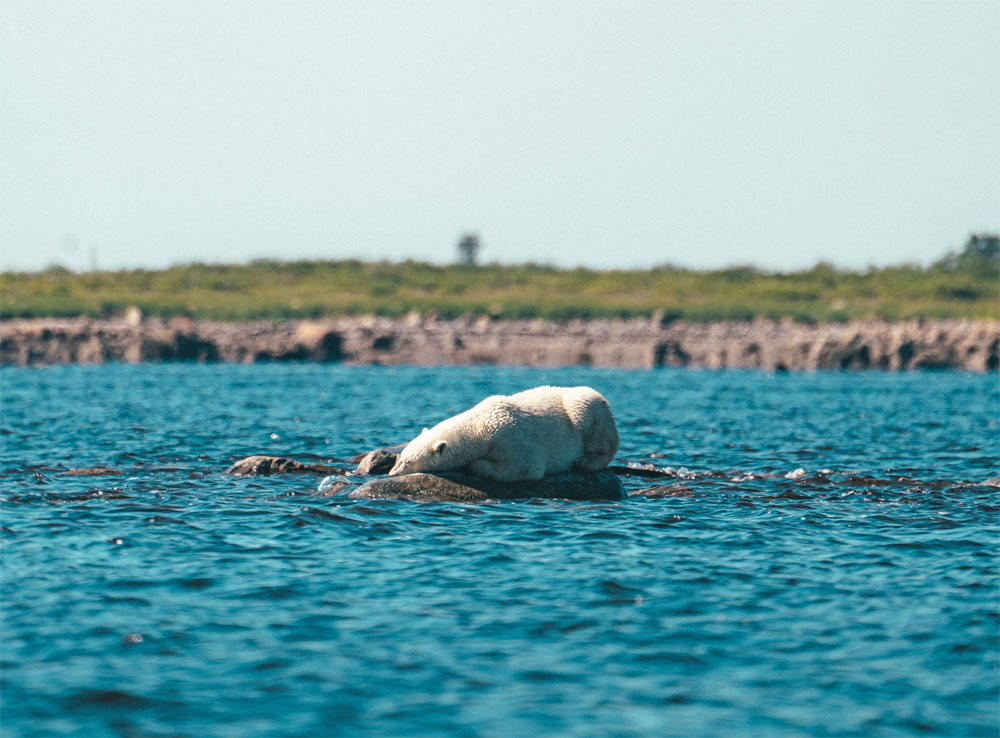
Nap time at Seal River. Polly Chan photo.
Guests for Conservation
While the polar bears were the stars of Polly’s trip, the reactions of the guests were just as impactful. Polly’s film will be more about tourism than about polar bear behaviour, so in addition to filming polar bears, she also captured the reactions of guests after their encounters with the bears.
A number of guests on Polly’s trip were from Singapore and had little prior knowledge about polar bears and their environment before arriving at Seal River. Through interviews and candid filming, Polly documented their transformation from casual tourists to informed advocates for wildlife conservation.
“I like to film tourist reactions and interview them to see how they feel before and after their experiences.” said Polly. “And I do see a difference. Before these guests came to Seal River, it was like postcard experience for them, but after seeing the real thing, along with the presentations and knowledge from the guides, they changed.
“They will think more about conservation now when they’re back home, share with friends and family, and take more action in their daily life. This is actually good in Singapore, because the government there already does a lot with regards to being eco-friendly. So they know about conservation, but after seeing the polar bears up close in their home environment, they will want to do more and share more.”
Overcoming Challenges
The journey was not without its challenges. Polly initially struggled with the western food served at the lodge but was pleasantly surprised when the staff accommodated her request for rice and noodles. “The food was good,” said Polly. “Though as someone from Asia, I initially had difficulty adjusting. They accommodated me by making rice and noodles, which I appreciated.” This small act of hospitality highlighted the lodge’s commitment to guest satisfaction, ensuring that everyone, regardless of their background, feels welcome.
Polly’s project also faced logistical challenges. Filming in the Arctic environment required careful planning and coordination, especially given the tight itinerary. However, the support from Churchill Wild’s team and the cooperation of fellow guests made it possible for Polly to capture the necessary footage for her film.
“Our filming was on a very tight schedule,” said Polly. “We have so much equipment to arrange and so many shots to get. But we got the shots we needed.”
Looking Ahead
Polly’s journey to Seal River Heritage Lodge is a significant milestone in her career as a wildlife filmmaker. Her dedication to capturing and sharing the beauty of wildlife is evident in every frame she shoots. As she continues to grow her YouTube channel and work on professional projects, Polly remains committed to her ultimate goal of becoming a producer and filmmaker focused on wildlife.
“I aspire to be a producer,” said Polly. “I do everything when I’m on a solo trip, but I’m learning how to work with people, and let other people do some of the work.”
Polly’s experience with Churchill Wild not only provided her with stunning footage for her film but also deepened her understanding of the Arctic ecosystem and the challenges facing polar bears. She plans to return to one of the Churchill Wild ecolodges in the winter to capture the stark beauty of the frozen Hudson Bay and further explore the life of polar bears in different seasons.
“I think I will come back,” said Polly. “I would like to see how it is for the polar bears in the winter. I know it’s cold, but I have the mental preparation already, and I really want to see what Hudson Bay is like when the ice has formed. And how the bears behave.”
The Message of Conservation
Polly is not just documenting wildlife; she is telling important stories that bridge the gap between human experiences and the natural world. Her work underscores the delicate balance between promoting wildlife tourism and preserving natural habitats. While tourism can create a carbon footprint, it also has the potential to educate and inspire people to take action for conservation. Polly’s hope is that her film will encourage viewers to think critically about their travel choices and their impact on the environment.
“It’s not a yes or no answer,” said Polly. “I want people to think about it.”

